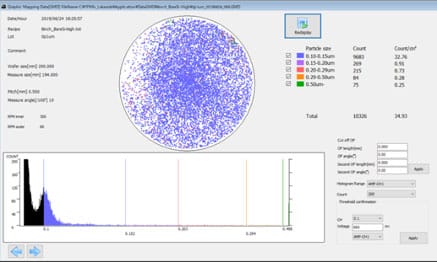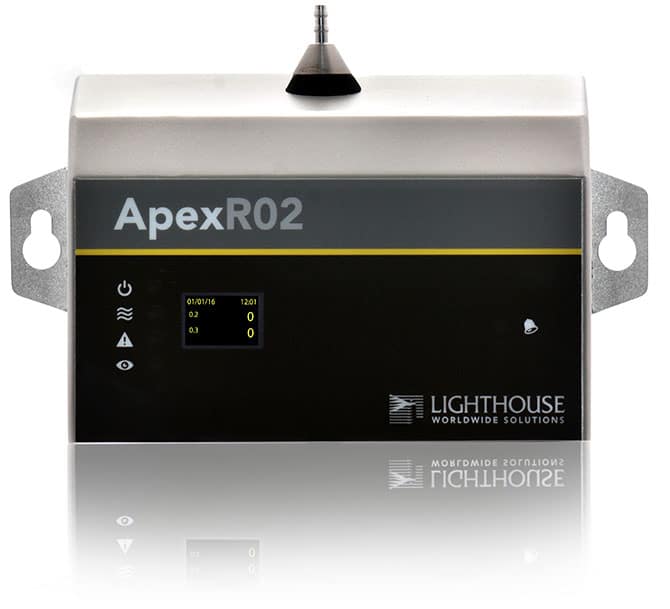Understanding the Process:
Photolithography is a complex process that involves multiple stages, from wafer production to fabrication and assembly. Throughout these steps, the wafer comes into contact with various chemicals, gases, and environments, making it highly susceptible to various types of particle contamination – of which even the tiniest can wreak havoc on the etched circuit patterns – leading to reduced yields and increased manufacturing costs.
The Impact of Particle Contamination:

Image credit: Eumetrys, France, YGK scanning system
Particle contamination in photolithography has several detrimental effects:
- Reduced Product Yield: Those minuscule particles on the wafer surface can disrupt the deposition and etching processes, resulting in defects in the circuit patterns. This, in turn, leads to a lower number of usable chips per wafer, ultimately reducing your overall product yield.
- Increased Defect Density: The presence of particles can cause random defects in the circuit patterns, leading to a higher defect density in the final product. This not only compromises the quality of your products but also increases the likelihood of customer returns.
- Costly Rework and Scrap: Contaminated wafers often require rework or, in some cases, need to be scrapped altogether. This incurs additional manufacturing costs and wastes valuable resources.
- Costly Rework and Scrap: Contaminated wafers often require rework or, in some cases, need to be scrapped altogether. This incurs additional manufacturing costs and wastes valuable resources.
- Equipment Downtime: Particle contamination can also impact the performance of the equipment used in photolithography. Contaminated chemicals, gases, or water systems can lead to equipment failures and unplanned downtime, further hampering productivity and profitability.
Real-Time Monitoring Systems

To mitigate these risks, real-time monitoring systems (RTMS) play a crucial role. These systems enable the immediate detection of contamination issues, allowing for timely mitigation and decision-making. Let’s explore some key advantages of implementing RTMS:
- Early Detection and Alarming: RTMS can quickly flag and raise alarms for any abnormal environmental conditions, such as high particle counts or humidity levels. This empowers operators to take immediate action and investigate the root causes of contamination.
- Process Monitoring: RTMS allows for continuous monitoring of critical process locations, including stockers, tool load locks, and wafer inspection areas. By keeping a close eye on these areas, any deviations from the desired cleanliness levels can be swiftly identified and addressed.
- Trend Analysis: RTMS provides valuable trend analysis of cleanroom performance, enabling proactive identification of contamination problems. By analysing data over time, patterns and correlations can be identified, leading to early warnings and preventive actions.
- Filter Performance Monitoring: RTMS ensures the efficient performance of HEPA and ULPA filters, guaranteeing the supply of clean air to critical process areas. Any issues with filter efficiency or leaks can be detected and rectified promptly, preventing further contamination.
In the fast-paced world of the semiconductor industry, protecting your photolithography process is paramount. Particle contamination poses significant risks that can lead to reduced yield, increased defect density, and costly rework. By implementing real-time monitoring systems, you can stay one step ahead of potential issues. These systems provide early detection, alarming, and trend analysis, allowing you to take immediate action and prevent contamination from impacting your production yield and product quality.
Investing in quality monitoring equipment such as the Apex and Vertex series from Lighthouse will ensure that your photolithography process remains efficient and reliable. Don’t let particle contamination hinder your success – prioritise monitoring and safeguard your semiconductor production line.

